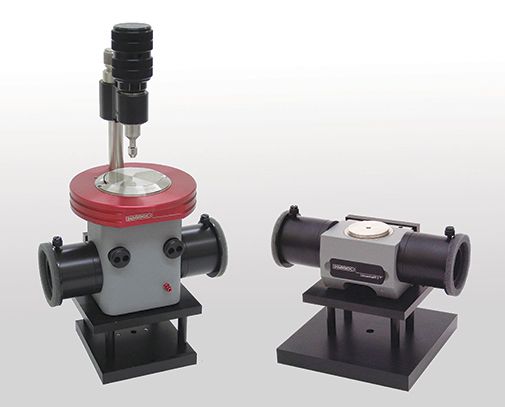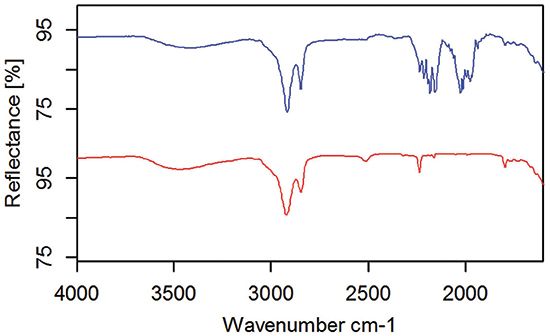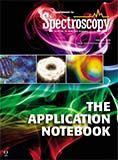A Diamond ATR-FTIR Study of Nitriles
Special Issues
This applications note compares the sensitivity of a single-reflection ATR to multiple-reflection ATR for the nitrile functional group infrared transition.
Diamond ATR has become one of the most commonly used FT-IR spectroscopy methods. However, the strong diamond lattice bands in the 2300–1900 cm-1 region make it difficult to measure the functional groups from nitriles, isocyanates, isothiocyanates, diimides, azides, and ketenes that would normally appear in that region. This applications note compares the sensitivity of a single-reflection ATR to multiple-reflection ATR for the nitrile functional group infrared transition.
Experimental
Infrared spectra were collected on an FT-IR spectrometer equipped with the Harrick DiaMaxATR™ single-reflection high-throughput diamond ATR accessory or ConcentratIR2 multiple-reflection diamond ATR (see Figure 1). The system was purged to remove water vapor and CO2. Spectra were collected at 8 cm-1 resolution, and signal averaged over 32 scans. The spectra were referenced to the clean ATR crystal.

Figure 1: Two diamond ATRs: Single reflection DiaMaxATR (left) and ConcentratIR2 (right).
The sample used here was a High Five Nitrile Disposable Glove (lightly powdered, textured, P/N N842). For the single-reflection ATR measurement, a portion of the glove was pressed against the ATR crystal using the maximum force supplied by the build-in pressure applicator. For the multiple-reflection ATR measurements, the sample was gently pressed against the ATR crystal with compressible foam to fill the trough, and to apply force as uniformly as possible.
Results and Discussion
Figure 2 shows the two spectra. The upper spectrum measured with the multiple-reflection ATR shows only noise in the 2300–1900 cm-1 region, due to the high absorbance of diamond in that region. The lower spectrum, however, clearly shows the C≡N stretch at 2238 cm-1. Another weaker band is also apparent in the single-reflection ATR spectrum at 2162 cm-1, possibly indicating the presence of an alkyne group.

Figure 2: Diamond ATR spectra of a nitrile glove measured using a multiple reflection ATR (blue) and a single reflection ATR (red).
Conclusion
The Harrick DiaMaxATR high throughput, single reflection diamond ATR is effective at measuring functional groups that are frequently obscured by the strong diamond lattice bands in the 2300–1900 cm-1 region. This makes it more suitable for analysis of the function groups in that region, including nitriles, isocyanates, isothiocyanates, diimides, azides, and ketenes.

Harrick Scientific Products, Inc.
141 Tompkins Ave., Box 277, Pleasantville, NY 10570
tel. (914) 747-7202, fax (914) 747-7409
Website: www.harricksci.com

A Proposal for the Origin of the Near-Ubiquitous Fluorescence in Raman Spectra
February 14th 2025In this column, I describe what I believe may be the origin of this fluorescence emission and support my conjecture with some measurements of polycyclic aromatic hydrocarbons (PAHs). Understanding the origin of these interfering backgrounds may enable you to design experiments with less interference, avoid the laser illuminations that make things worse, or both.